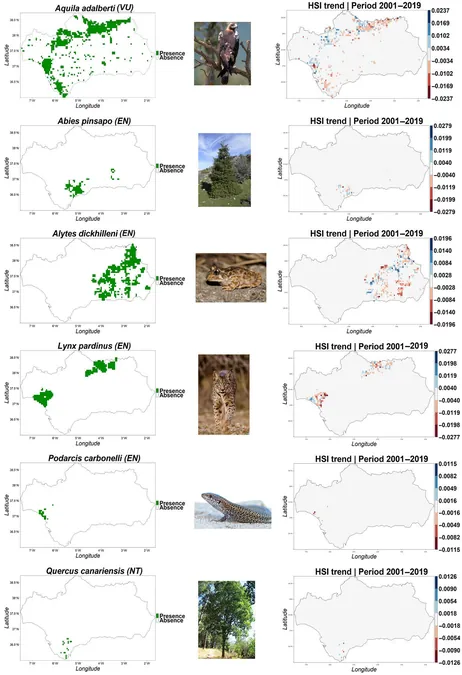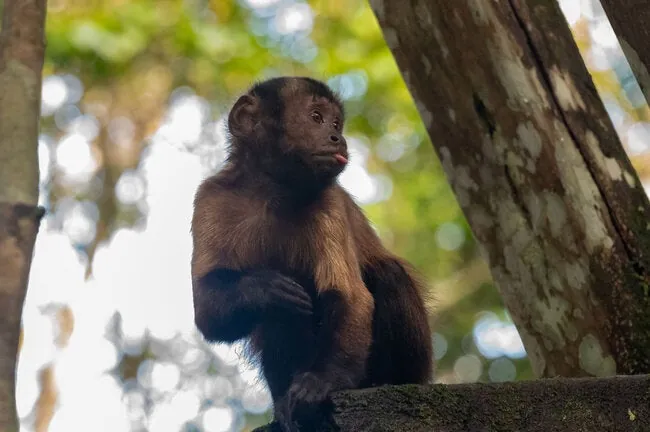
Revolutionary New Tool Transforms Environmental Conservation Strategies
2025-06-04
Author: Ming
Innovative Method Enhances Conservation Planning
A groundbreaking new prediction tool is set to revolutionize environmental conservation strategies by precisely targeting areas in need of protection. Utilizing satellite remote sensing and analyzing 20 years of species distribution data in Andalusia, this dynamic approach promises to reshape how conservation efforts are prioritized.
The Urgency of Habitat Preservation
Protecting natural habitats is critical for the survival of countless species and ensuring that ecosystems continue to provide essential benefits to society. Properly identifying key areas for conservation is crucial in the fight to maintain biodiversity.
A New Era of Conservation in Andalusia
Andalusia, with nearly 3 million hectares designated as protected areas—approximately 30% of the region—has historically evaluated these zones at specific moments. However, recent research from the University of Cordoba suggests a transformative tool that integrates satellite data with species distribution models over time to pinpoint conservation priorities more effectively.
Tracking Declines in Habitat Quality
This innovative tool was rigorously tested on six significant species of the Andalusian ecosystem, including the Iberian lynx and the Spanish imperial eagle. Alarmingly, the study revealed that 80% of the analyzed protected areas and these key species experienced a decline in habitat quality over the first two decades of the 21st century.
A Two-Pronged Approach to Conservation
The method, integral to the doctoral research of UCO's Antonio Velasco Rodríguez, hinges on two main components: satellite imagery detailing ecosystem functionality and the Habitat Availability Index, which estimates the likelihood of species residing in specific areas. This index merges remote sensing data with field-based observations for comprehensive insights.
Data-Driven Decisions for the Future
What sets this tool apart is its foundation of long-term data collection, allowing for a more nuanced understanding of habitat dynamics. By incorporating annual variations in habitat quality, the tool offers a forward-thinking perspective on conservation planning, highlighting regions that require immediate attention.
A Dynamic Framework for Conservation
Utilizing advanced software like MARXAN, researchers can visualize which locations are urgent targets for conservation, including both legally protected sites and surrounding areas. "This integrative methodology captures the complexity of natural systems by reflecting ongoing ecological changes," states Salvador Arenas Castro, a professor at UCO and advisor on the project.
A Call to Action for Biodiversity Protection
While initially validated through studies of Andalusian species, the research team believes this versatile tool could be applied across various regions and species worldwide. They aim to empower policymakers with this information to make informed, impactful decisions for biodiversity conservation.





 Brasil (PT)
Brasil (PT)
 Canada (EN)
Canada (EN)
 Chile (ES)
Chile (ES)
 Česko (CS)
Česko (CS)
 대한민국 (KO)
대한민국 (KO)
 España (ES)
España (ES)
 France (FR)
France (FR)
 Hong Kong (EN)
Hong Kong (EN)
 Italia (IT)
Italia (IT)
 日本 (JA)
日本 (JA)
 Magyarország (HU)
Magyarország (HU)
 Norge (NO)
Norge (NO)
 Polska (PL)
Polska (PL)
 Schweiz (DE)
Schweiz (DE)
 Singapore (EN)
Singapore (EN)
 Sverige (SV)
Sverige (SV)
 Suomi (FI)
Suomi (FI)
 Türkiye (TR)
Türkiye (TR)
 الإمارات العربية المتحدة (AR)
الإمارات العربية المتحدة (AR)